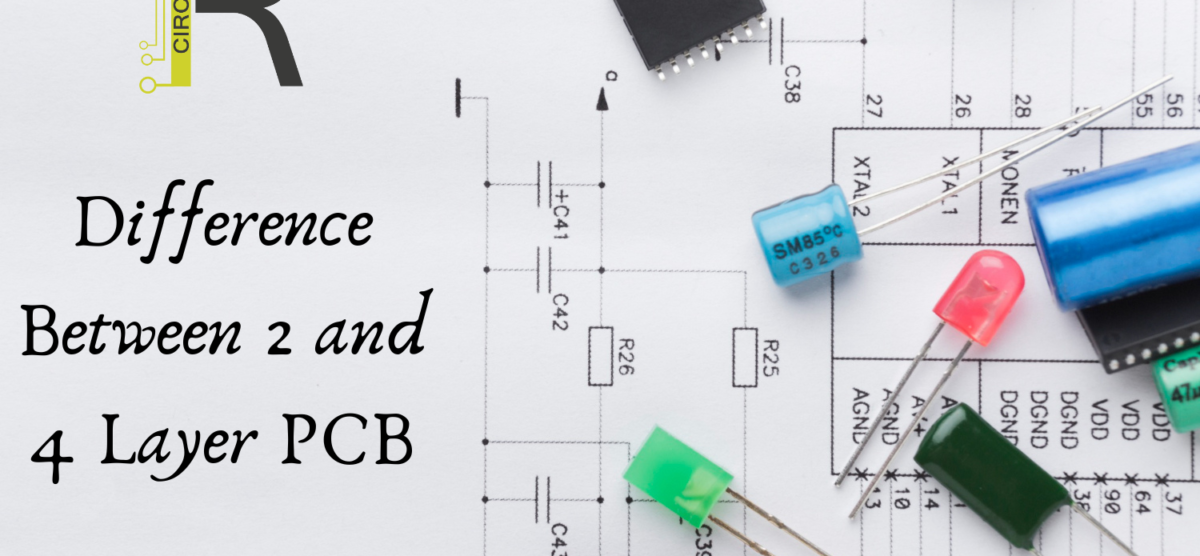Blog

Understanding the Difference Between 2-Layer and 4-Layer PCBs
Printed Circuit Boards (PCBs) are the backbone of modern electronics, providing the foundation for connecting components in a myriad of devices. Among the various types of PCBs, 2-layer and 4-layer PCBs stand out as common choices for different applications. In this comprehensive guide, we will delve deep into the differences between these two types of PCBs, exploring their design, functionality, advantages, and use cases.
Introduction to PCBs
Before delving into the specifics of 2-layer and 4-layer PCBs, let’s first understand what a PCB is and why it’s crucial in electronic devices. A PCB is a flat, rigid board made of insulating material, typically fiberglass, with conductive pathways etched or printed on it. These pathways, known as traces, provide the electrical connections between various electronic components like resistors, capacitors, integrated circuits (ICs), and more.
PCBs come in different layers, ranging from single-layer (one copper layer) to multi-layer (more than two copper layers). The number of layers significantly impacts the PCB’s complexity, functionality, and manufacturing cost.
2-Layer PCBs: Simplified Design, Cost-Effectiveness, and Basic Functionality
A 2-layer PCB, as the name suggests, consists of two layers of copper traces separated by a dielectric material (usually FR-4). This type of PCB is characterized by its simplicity, cost-effectiveness, and suitability for basic electronic applications.
Design and Construction: 2-layer PCBs have a straightforward design with a top layer (signal layer) and a bottom layer, both containing copper traces. The traces are connected through vias, which are holes drilled through the board and filled with conductive material.
Advantages:
- Cost-Effective: Due to their simpler design and manufacturing process, 2-layer PCBs are more affordable compared to multi-layer PCBs.
- Ideal for Basic Circuits: They are well-suited for electronic devices with less complex circuitry, such as calculators, remote controls, and small appliances.
- Easier Prototyping: Prototyping and testing of 2-layer PCBs are relatively straightforward, making them popular choices for initial designs.
Limitations:
- Limited Routing Options: With only two layers for routing traces, 2-layer PCBs offer limited flexibility in routing high-density circuits.
- Signal Integrity: In high-speed or high-frequency applications, signal integrity issues may arise due to limited ground and power planes.
4-Layer PCBs: Enhanced Functionality, Flexibility, and Signal Integrity
In contrast to 2-layer PCBs, 4-layer PCBs offer increased functionality, flexibility in routing, and improved signal integrity. They are commonly used in more complex electronic devices where space optimization and signal reliability are critical.
Design and Construction: A 4-layer PCB comprises four layers of copper traces sandwiched between insulating layers (core and prepreg layers). The additional layers allow for more complex circuit designs and better signal management.
Advantages:
- Enhanced Routing Options: With four layers, designers have more freedom to route traces, reduce signal crosstalk, and optimize ground and power distribution.
- Higher Density: 4-layer PCBs can accommodate a higher density of components, making them suitable for devices with multiple functionalities.
- Improved Signal Integrity: The additional layers contribute to better signal integrity, reducing electromagnetic interference (EMI) and improving overall performance.
Applications:
- Consumer Electronics: Devices such as smartphones, tablets, and gaming consoles often utilize 4-layer PCBs due to their compact size and enhanced functionality.
- Medical Devices: Medical equipment and devices require reliable and precise electronics, making 4-layer PCBs a preferred choice.
- Networking and Communication: Routers, switches, and communication devices benefit from the improved signal integrity and routing capabilities of 4-layer PCBs.
Choosing the Right PCB for Your Application
The decision between a 2-layer and 4-layer PCB depends on various factors such as the complexity of your circuit, space constraints, performance requirements, and budget considerations. Here are some key points to consider:
- Complexity: If your design involves a simple circuit with fewer components and routing requirements, a 2-layer PCB may suffice. However, for complex circuits with high-density components and stringent signal requirements, a 4-layer PCB is more suitable.
- Space Optimization: 4-layer PCBs are advantageous when space optimization is crucial, as they allow for compact designs without compromising functionality or signal integrity.
- Cost Considerations: While 2-layer PCBs are more cost-effective for basic designs, the additional features and performance benefits of 4-layer PCBs may justify the higher cost for advanced applications.
Conclusion
In conclusion, the choice between a 2-layer and 4-layer PCB depends on the specific requirements of your electronic device or system. Both types offer distinct advantages and are tailored to different levels of complexity and functionality. By understanding the differences outlined in this guide, you can make an informed decision when designing your PCBs, ensuring optimal performance, reliability, and cost-efficiency for your project.






